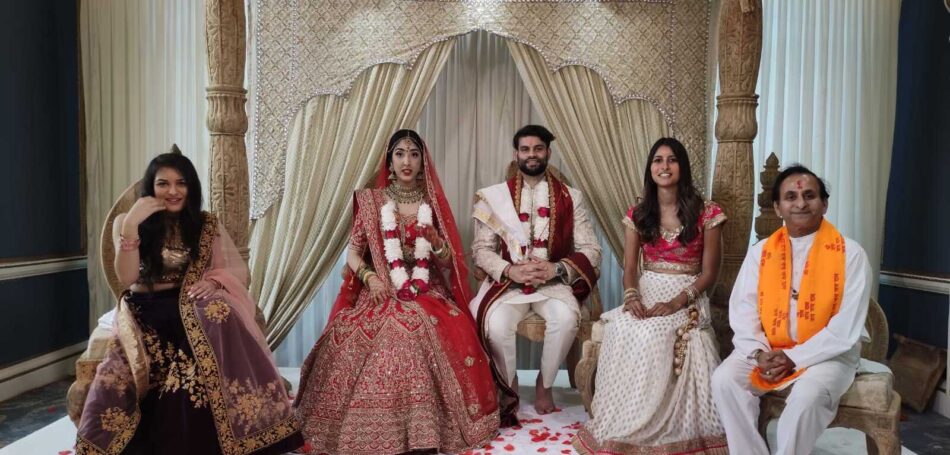
INTRODUCTION OF WEDDING RITUALS
Especially, Hindu weddings are vibrant, intricately planned, culture-rich festivities full of celebration and tradition. One thing that is common in all these is the need for value, reliability, and trustworthy Hindu priests/priests for weddings, or Hindu priest for wedding/wedding priest ceremonies. In a foreign location, it is more difficult to find the Wedding Priest or a Hindu priest/priest for the wedding who can perform ceremonies as perfectly as couples and families want. Indian priest or Hindu wedding priest London/priest for wedding plays the main role in a Hindu wedding. A Hindu pandit for wedding ceremony/priest for wedding or Indian wedding priest is the physical, spiritual, and emotional union of two people. it's also about the coming together of two families through prayer and celebration. A wedding is a sacred union of two souls Hindu pandit for wedding UK/priest for wedding/Hindu priest plays the main role for a Hindu wedding. We can call him Wedding priest also or a Hindu priest for weddings. Hindu priest or wedding priest Ketul Joshi is such a type of Hindu priest. Hindu priest for wedding/Indian wedding priest Ketul Joshi travels to many countries to perform wedding rituals.
The Indian wedding priest/best Hindu wedding priests check the Rashi of the groom and bride first then decides on the date and muhurta. and says on which day a Hindu wedding can be the best for both the groom and the bride. After that family keeps a function for this called the wedding ceremony. The wedding ceremonies are very colorful, and celebrations may extend for several days. In a Hindu wedding, After the ceremony two-family joined each other for a lifetime. Hindu weddings take 2 or 3 days to complete. It depends on Hindu rituals and functions performed for Hindu weddings.
The Groom is then escorted to the mandap where supplications to God are offered to Lord Ganesh first and afterward a concise function happens to respect the man of the hour and purify the mandap under which the wedding service will occur.
The Bride then makes her fabulous passageway and is escorted to the mandap by her maternal uncles or siblings in a service known as Kanya Agaman. A screen called the Antarpat is kept before the Groom differentiating him from the Bride.
After that, Rituals of Hindu weddings start with the help of the Hindu pandit for wedding/Indian wedding priest or Hindu priest ceremonies. There are many Hindu wedding rituals. Some are described in brief below.
Hindu pandit for wedding/Hindu priest for wedding Ketul Joshi (Hindu priest) believes in proving Hindu priest services Like Indian priests/Indian wedding priests and a friendly and flexible way so that today's young generation can get a chance to understand our Hindu Culture.
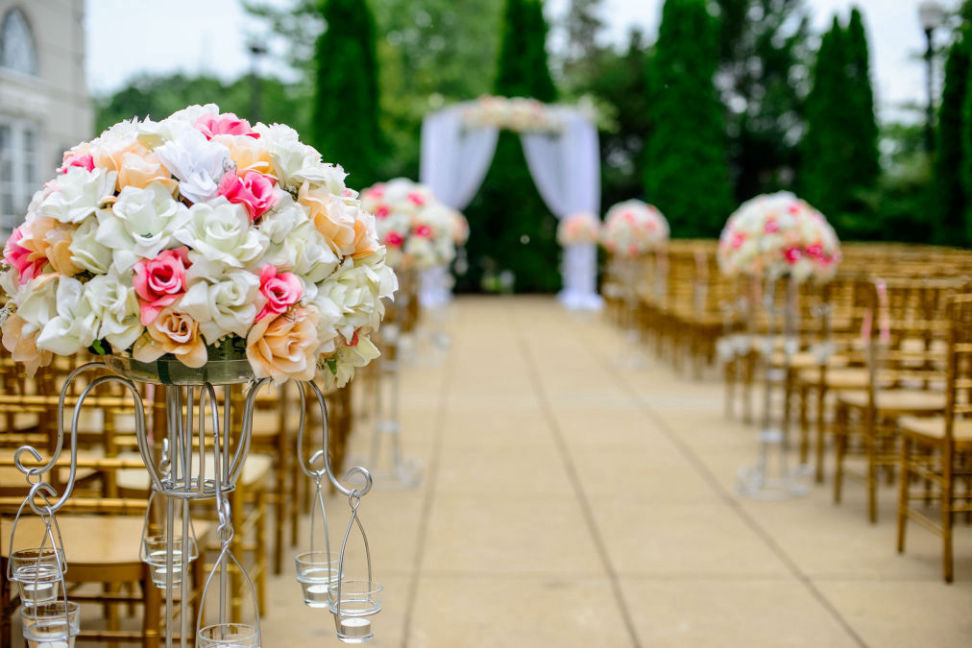
The wedding begins as the groom's family and friends are welcomed near the entrance. With the guidance of the best Hindu wedding priests/Hindu priests or wedding priests, Groom will step on Saput (a clay pot) with his right foot, crushing it to demonstrate that he has the ability, and strong determination to overcome all obstacles that the couple may face. Groom will then be accompanied to the mandap.
The Indian wedding priest or Hindu priest for the wedding ceremony/wedding priest, the wedding begins with the worshipping of Lord Ganesh, who the wedding priest or Hindu priest will invite to join us on this prosperous day. Lord Ganesh dispels darkness and removes any obstacles to the ceremony.
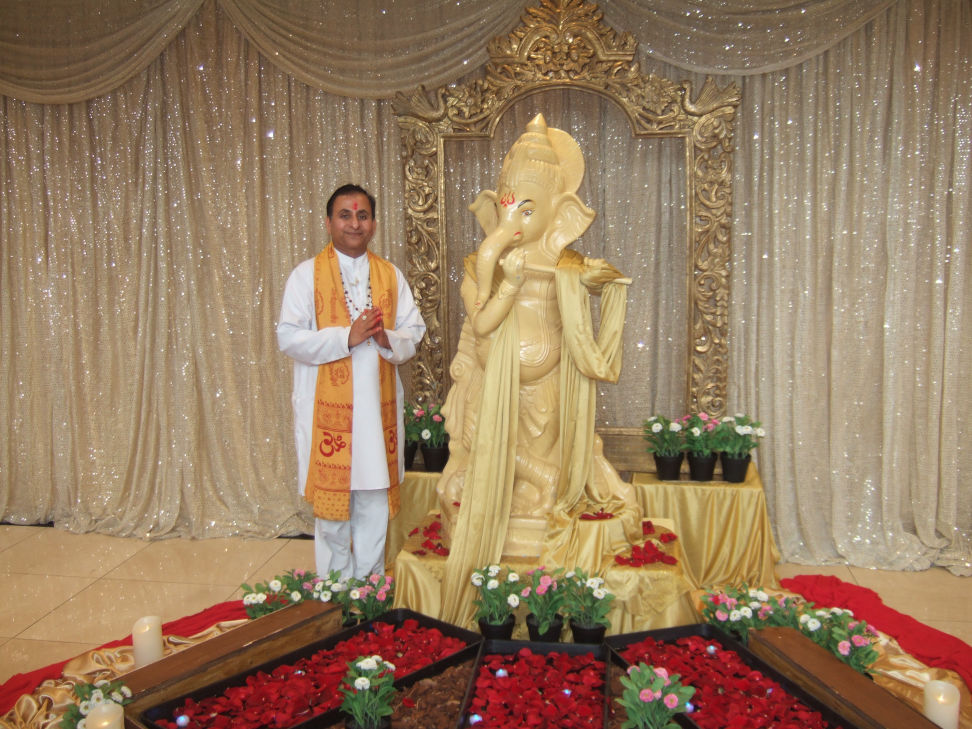
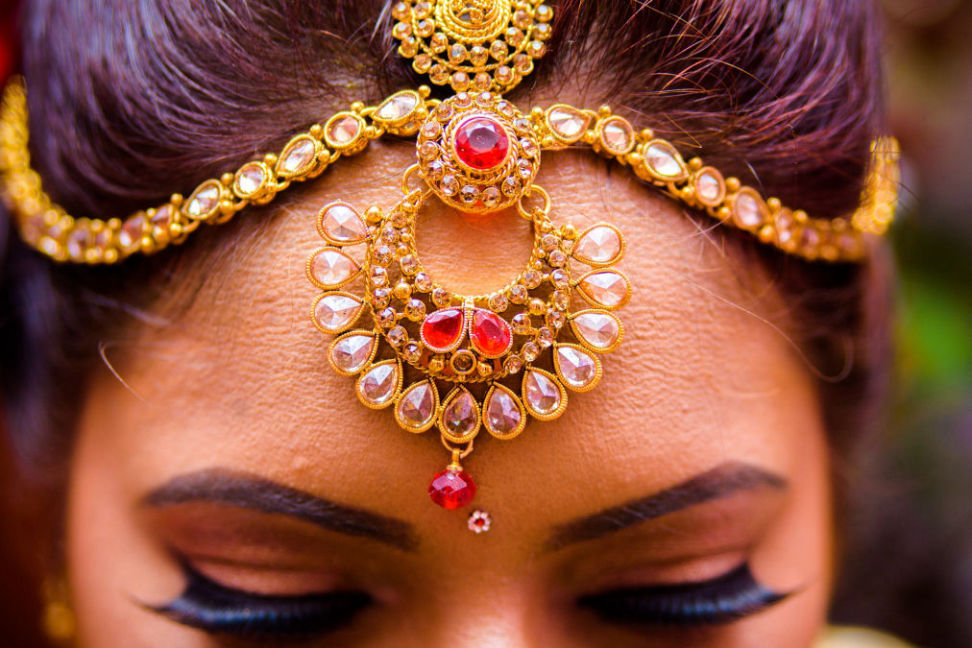
The wedding priest or Hindu pandit for wedding/wedding priest gives his consent for the wedding to proceed, by offering Bride's hand in marriage to Groom. wedding priest or your Hindu priest has to knowledge of all rituals needed to perform.
The cloth is removed & the couple exchange flower garlands acknowledging their decision to choose each other's as life partners.
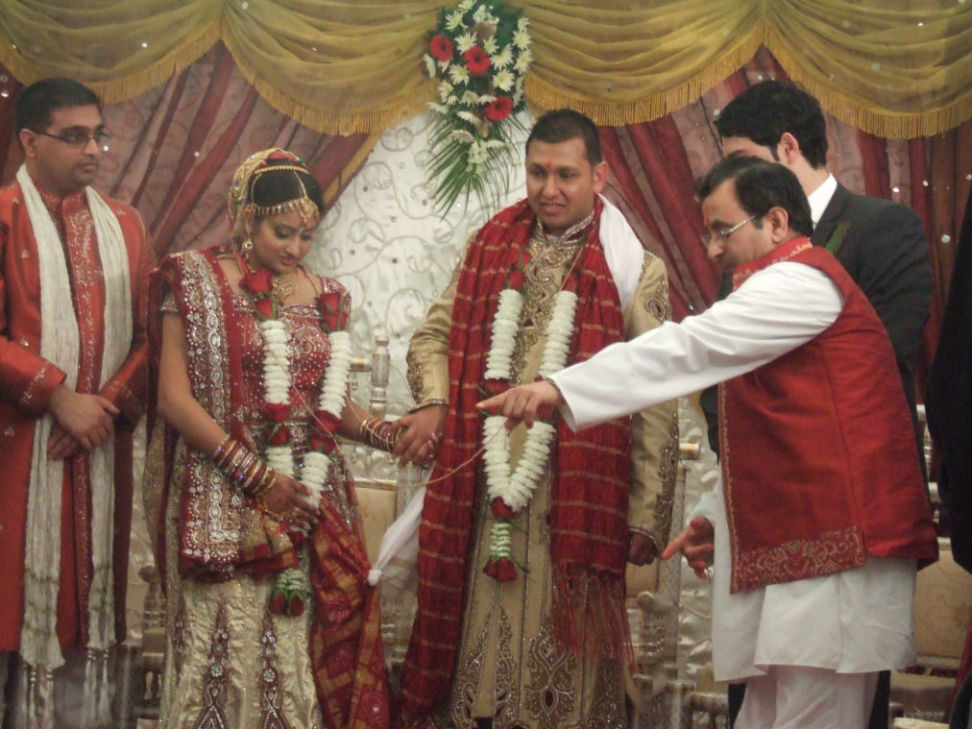
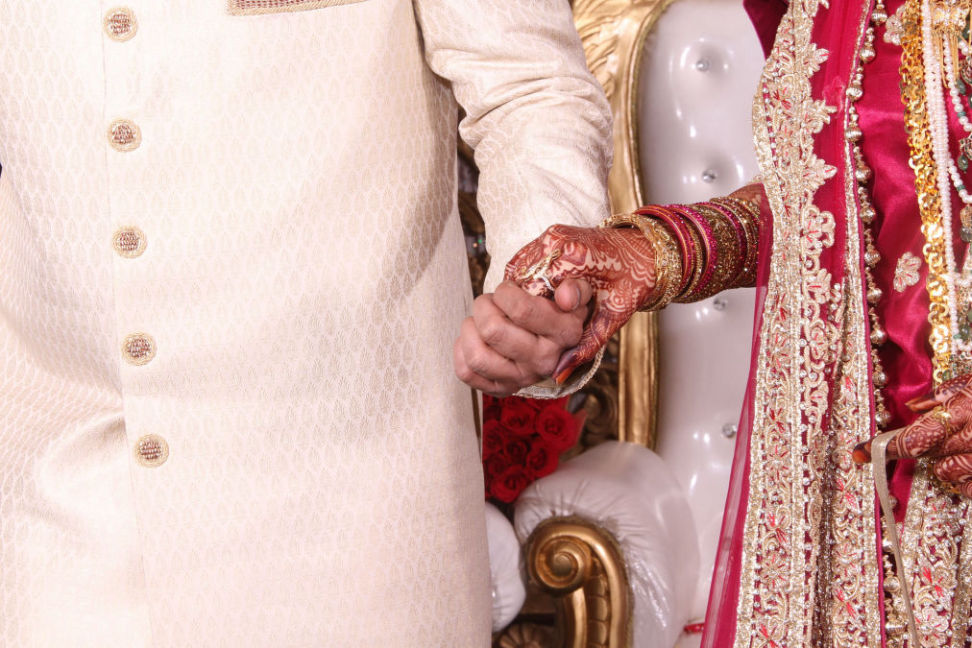
The Bride's father gives his consent for the wedding to proceed, by offering Bride's hand in marriage to Groom as per the guide by the wedding priest, while in this ceremony Hindu priest for wedding/wedding priest chants the mantras. To know more about Kanyadaan. Visit our Blog Kanyadan : Hindu Wedding.
A sacred thread made of handwoven cotton around the necks of the couple to symbolize the couple's bond is bestowed by The wedding priest, taking the vow of love, cherish & protect each other throughout their life together.
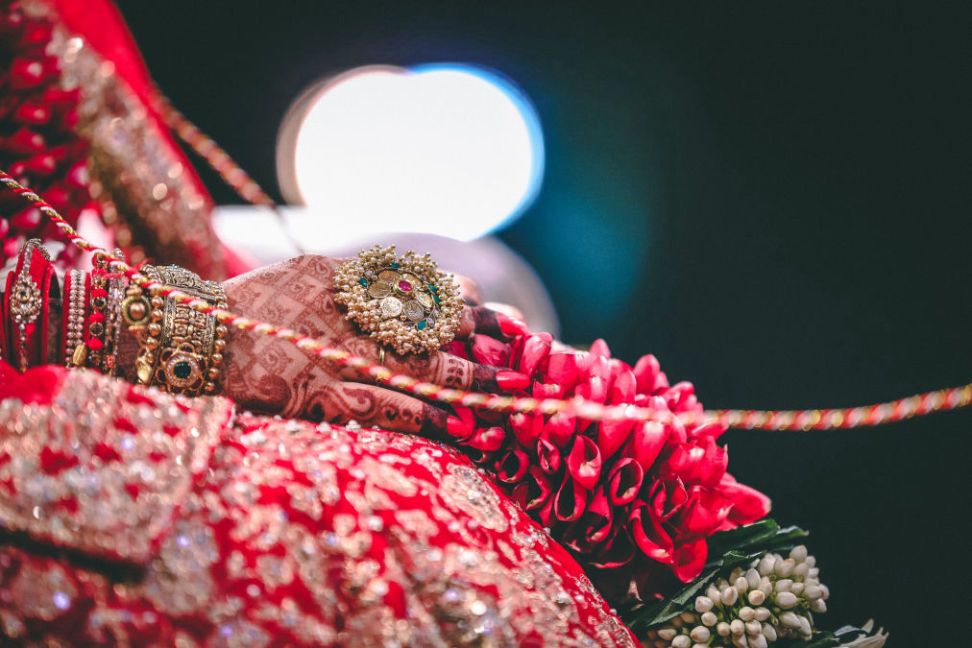
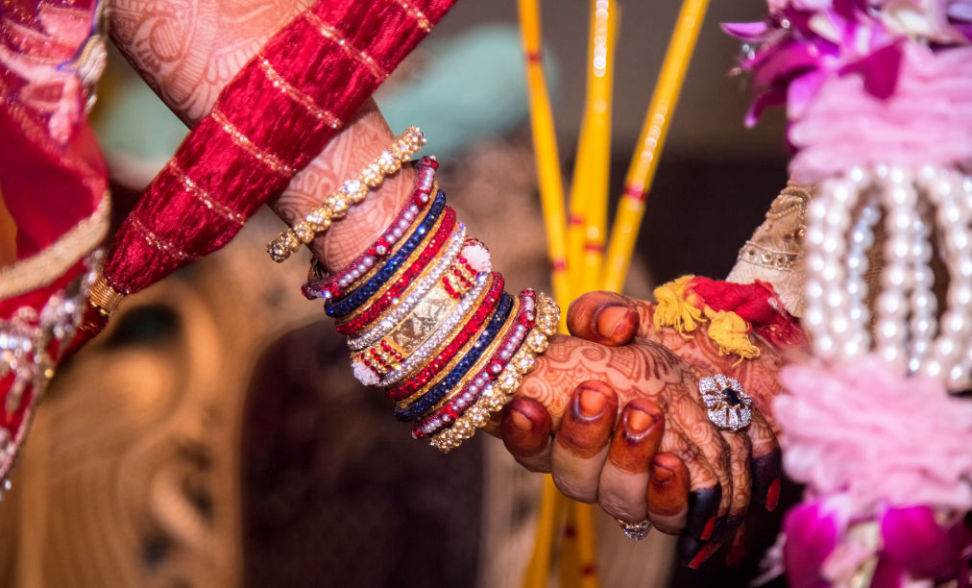
Groom & Bride's right hands are joined together to represent a union of souls.
Groom's uparnu (scarf) is then tied in a knot with Bride's chunari (sari) signifying a permanent union between the couple & the start of their journey as husband and wife.
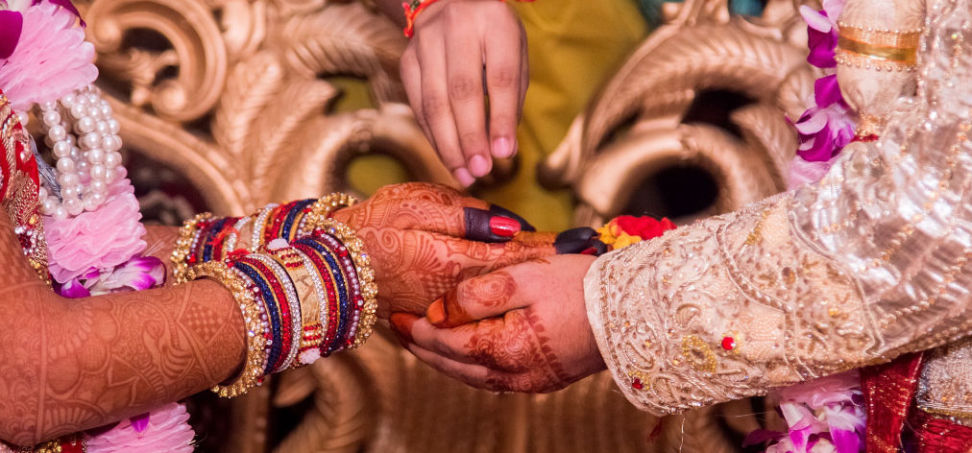
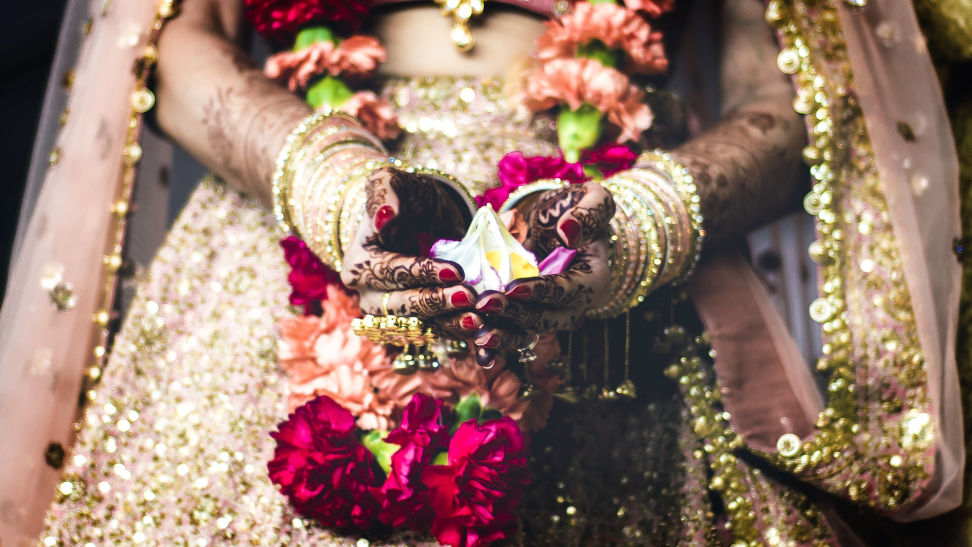
The wedding priest or Hindu pandit for wedding sets up the Agnikunda (sacred fire) which represents Lord Vishnu, symbolizing the illumination of mind, knowledge, and happiness. Offerings are made to the fire whilst some prayers are said. The groom & bride then walk around their sacred fire four times to represent the essential duties in life.
Groom & Bride exchange their vows by taking seven steps together to promise:
1. To share their joys and sorrows
2. To nourish each other
3. To obey, respect and value each other as equals
4. To be faithful to one another
5. To be blessed with strong, healthy & happy children
6. To preserve their wealth
7. To be true companions and remain long-life partners
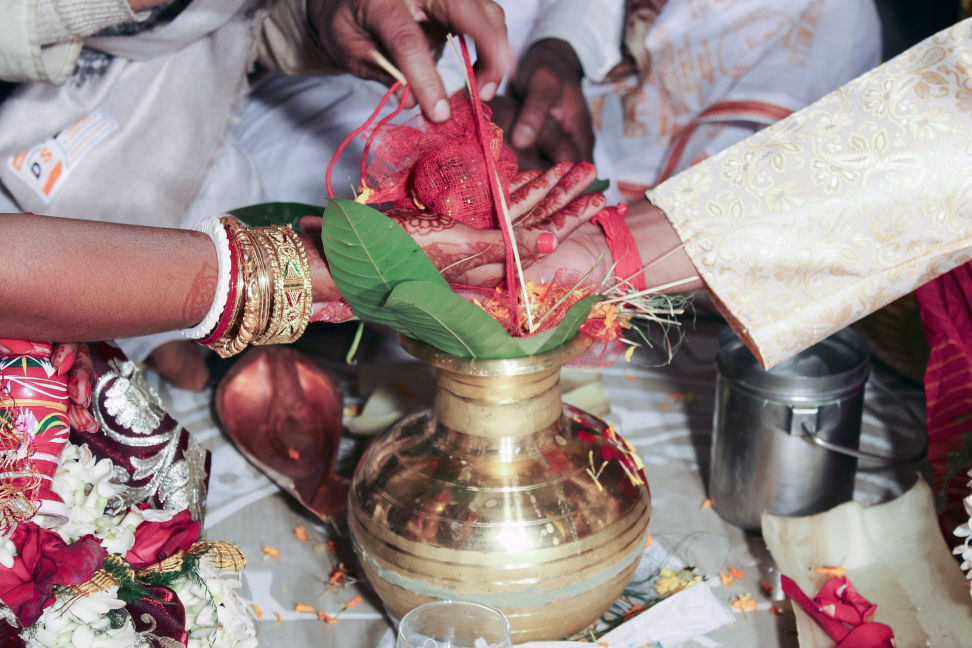
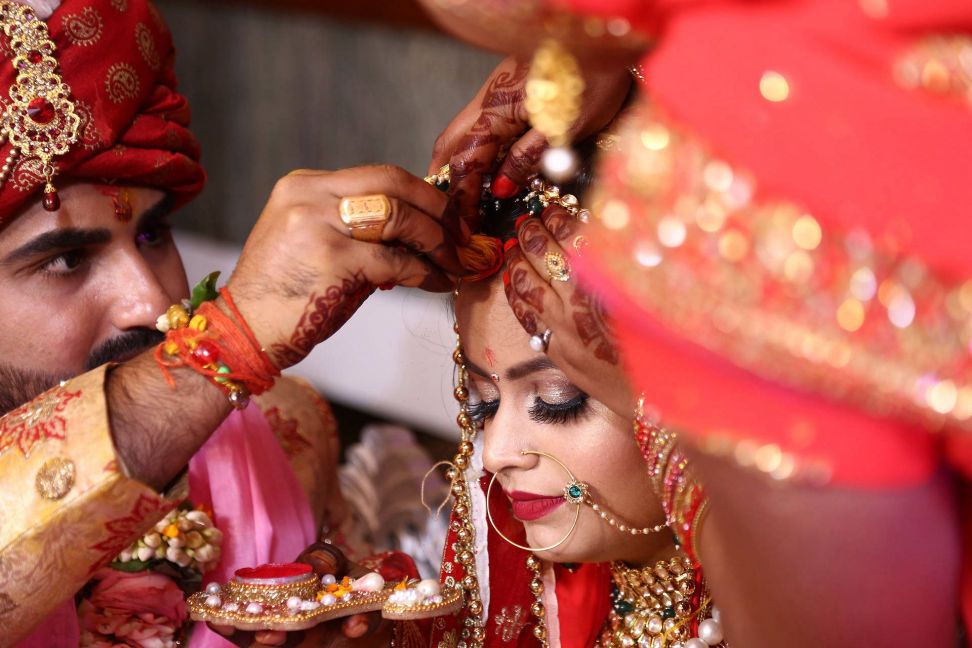
At the end of the marriage ceremony, Groom places sindhur (a red powder) along the parting in Bride's hair to wish a long life to her relationship with him, and places the mangalsutra (necklace) around Bride's neck as a sign of their marriage, commitment, love & devotion
Groom & Bride feed each other Indian Sweets to signify happiness & harmony and a "sweet" peaceful life together.
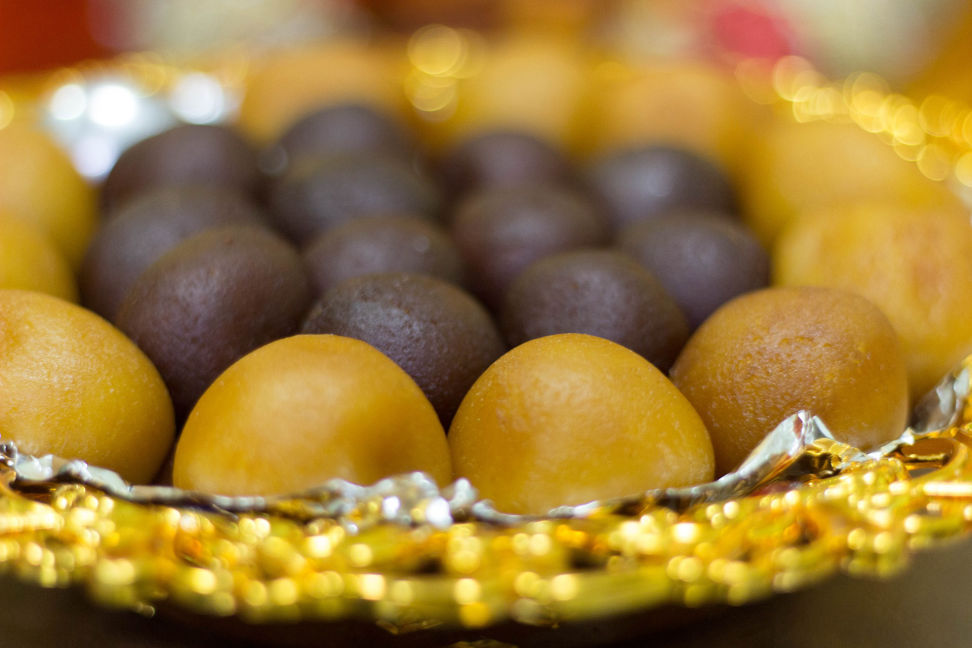
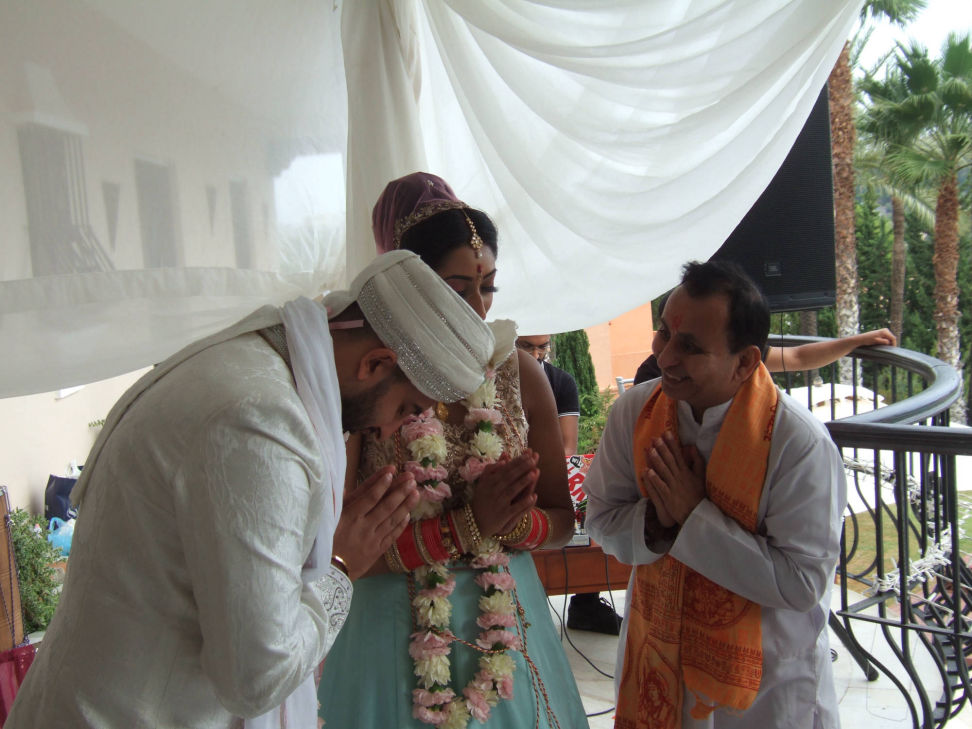
After completing all Hindu wedding ceremonies by a Hindu priest or Hindu wedding priest/wedding priest Bride and groom go to take the blessings of the Hindu wedding priest. The newlyweds are blessed by the wedding priest.
The Bride's family bid farewell to the daughter who has now become a wife. At the end of the ceremony, the bride throws a fist of rice so that the house of her childhood remains prosperous and happy after she has left for her new home. She leaves with tears of joy and sorrow but carries the very best wishes of all who witnessed the matrimonial ceremony.
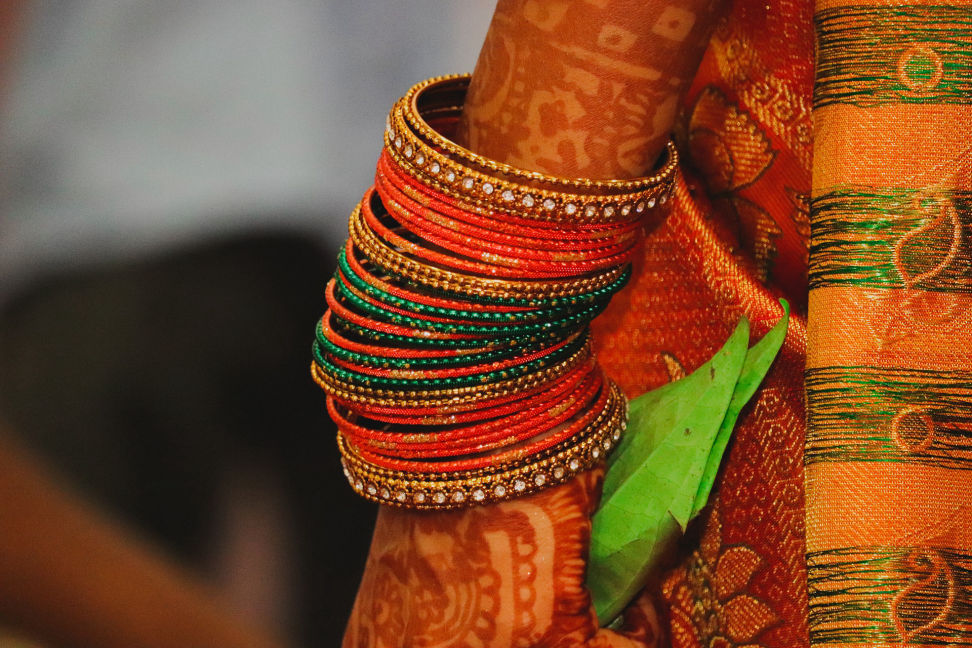
In all Hindu weddings, the Hindu pandit for wedding/Hindu priest or wedding priest or Hindu wedding priest London plays an important role. A good Hindu priest does Asian weddings, They should to knows how to balance the big day of your life with the customs that are so important to you and your family. When you have a traditional Indian or Hindu wedding oftentimes you will need a good Hindu pandit for wedding/Hindu priest wedding or wedding priest, also known simply as a Hindu priest/wedding priest. The cultures of a Hindu wedding are not only beautiful and lively but also exhilarating. It’s wonderful that so much time and detail go into making a couple of such a wedding feel supported and loved every step of the way. While the support and love for the couple during their special day can be seen across multiple cultures - there is just something about the way Indian families come together. They celebrate the joining of new lives over the course of a week with individual celebrations like the Baraat, Mehndi, and mixed social events like the wedding reception. It is special, beautiful, and an event that is not easily forgotten. Hindu pandit for wedding/wedding priest has to knowledge of all Hindu wedding ceremony rituals.
Hindu wedding priest or Hindu priest for wedding professional is Hindu priest/priest for wedding or wedding priest is very honest about timing, fees, courteous, and well-versed in traditional wedding customs. Hindu priest/priest for wedding tries to make the wedding more than just a formal occasion. Earlier, Indian weddings used to last for up to six hours, but nowadays, the ceremony lasts for less than an hour as per the Client's requirements. Our wedding priest can adapt to the timing and makes sure that the ceremony doesn’t go behind schedule. you can search Hindu priest near me.
Hindu priest Uk/wedding priest plays the main role in Hindu wedding as Hindu priest or Best Hindu wedding priests is the main person who will guide you for the wedding ceremony. The wedding priest/Hindu pandit for a wedding (Indian wedding priest) has knowledge of all rituals of a wedding ceremony because only the Hindu pandit for a wedding can guide you through all rituals of the wedding ceremony. if you are looking for a progressive Hindu pandit for wedding/Indian wedding priest to conduct your wedding then contact Hindu wedding priest ketul Joshi. generally, a Hindu priest for a wedding ceremony provides many services and it depends on the Hindu priest. Indian weddings include various rituals that are normally presided over by a Hindu priest. Hindu pandit for wedding/Hindu priest for wedding or wedding priest has rites to perform rituals in a Wedding ceremony. you can contact like Hindu priest near me.
The Wedding Priest/priest for wedding plays a very important role in Hindu Marriages. After all, besides the Bride & Groom, the Hindu wedding Priest is the third most important person on the wedding day. So choosing the right Wedding Priest who is suitable for your requirements is quite essential. The rites and rituals of Hindu weddings are one of the most important Hindu religious traditions presided over by a Hindu priest.
After the bride & groom, the Hindu Priest/wedding priest is the third most important person on the wedding day. So, choosing the right wedding priest or Hindu priest who is suitable to your requirements is quite essential. Hindu priest/priest for wedding ketul Joshi's mission is to ensure that the complete Hindu Wedding Ceremony is conducted in a professional manner, with explanations of the Sanskrit Vedic Scriptures in English, involving the couple, as well as the wedding guests, within the agreed timeframe. The Shlokas and Mantras are chanted in Sanskrit, whilst all explanations are given in English to a quiet and engaged congregation.
Performing the rituals during the wedding ceremony is a time-consuming process. Therefore when you choose a Hindu priest/priest for a wedding, you need to prioritize experience more than anything. I was a wedding priest/Hindu priest and have immense experience in conducting Hindu weddings. as a Hindu priest for weddings and an experienced hand, who have presided over numerous Indian Hindu weddings. The wedding priest in this ceremony need not be formally trained as a Hindu priest or wedding priest. He or she should be familiar with Hindu weddings and comfortable acting as a master of ceremonies, guiding the participants through their parts and explaining the meaning of the service to the audience. It's okay if the wedding priest keeps the script in hand during the ceremony. The wedding priest/priest for a wedding is the only person who can make your wedding more precious. A God's language is Sanskrit. Every person should get married and enjoy life together. Life is beautiful, If you know how to live in peace and harmony. In Indian tradition is to follow the scriptures. A Hindu priest/ Indian wedding priest will help you, guide you, with any questions or problems Find the solution, Anything you wish is good for your family. A Hindu priest/wedding priest will guide you on Which pooja ceremony to do. A Good Hindu Priest (Ketu Joshi UK) helps you in so many ways in your life.
Being the pillar of any Hindu wedding ceremony, I (wedding priest) priest for wedding preside over hundreds of Hindu wedding ceremonies each year, and always make sure that it is a heartfelt experience for you & your family. It doesn’t matter whether you’d like to make it a simple and short, or a long ceremony, I (an Indian wedding priest/Hindu priest) wedding priest will be elated to collaborate with you and make sure that you get exactly what you were looking for. If you are looking for a progressive Hindu priest for a wedding/wedding priest to conduct your wedding, then stop here you can call +44 079 0373 5365 Hindu wedding priest ketul Joshi in the UK.
Tradition is a critical aspect of the Indian culture and it all begins with the start of a family of friends and a Hindu priest on their wedding day. normally most families have their family Hindu priest or wedding priest.